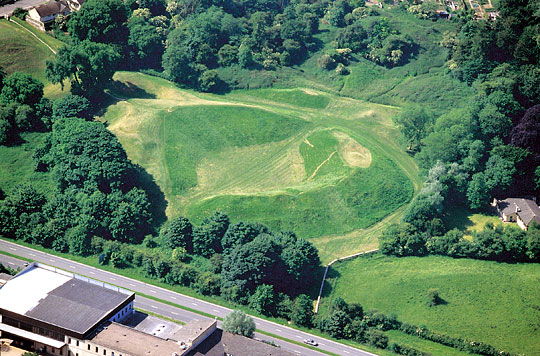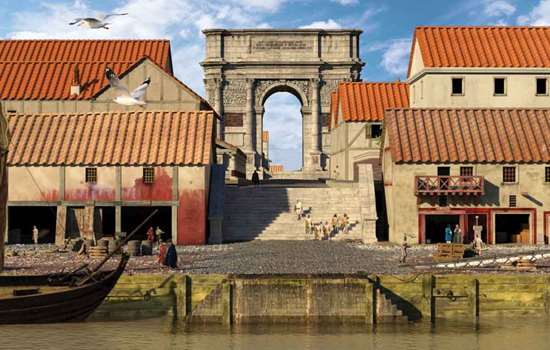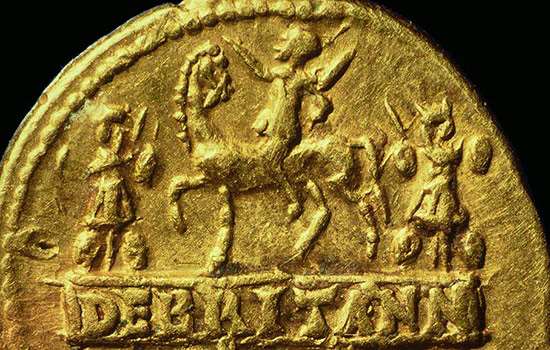History of Cirencester Amphitheatre
The Cirencester amphitheatre is one of the largest known examples surviving from the Roman occupation of Britain.
It was built just outside the walls of the town (then known as Corinium) early in the 2nd century AD.

Cirencester was second only to London in size at this period, with a population of over 10,000, and was at its finest just as Roman rule was collapsing throughout the Western Empire.
In AD 408 the last contingents of the regular Roman army left Britain. Without their pay to support the local economy and maintain order, and with no central administration to maintain communications, town life rapidly declined.
Private patrons prepared to pay for the public games could not be found. No longer used for the pursuit of pleasure, the amphitheatre became a fortress in an attempt by the town leaders to safeguard their community.
Its entrances were narrowed and a ditch dug along the southern sides, and remains of timber buildings dating from the 5th century have also been found. These efforts appear to have been in vain. In AD 577 a stronghold believed to be Cirencester is reported as falling to the advancing Saxons.
The amphitheatre then remained abandoned for several centuries.
In the Middle Ages the Abbot of Cirencester enclosed it for use as a rabbit warren. Its local name, the Bull Ring, suggests that it may once have been used for bull-baiting: a return to its original purpose.
Description
The amphitheatre is oval in plan (unlike the circular forms built at such places as Dorchester and Silchester), and it has an entrance at each end of the long axis. The massive banks, which are all that can be seen today, supported tiers of seats made from planking on terraced drystone walls.
There was also an area for standing spectators and it is estimated that the amphitheatre had a capacity of around 8,000 people. A wall separated the spectators from the arena, which was floored with fine gravel and sand (harena being the Latin word for sand).
Of the two entrances, only the eastern one has been excavated. Originally it seems to have been open to the sky, but towards the end of the 2nd century its passageway was vaulted in stone and extra seating was built above it.
During the course of a later rebuilding, two small rooms were created on either side of the inner end of the entrance. One may have been used as a shrine to the goddess Nemesis – a common feature of amphitheatres elsewhere in the Roman Empire.
Further Reading
Beecham, KJ, A History of Cirencester and the Roman City of Corinium (Stroud, 1978)
Viner, DJ, The Surviving Monuments of Corinium: the Roman Cirencester (Cirencester, 1973)
FIND OUT MORE



